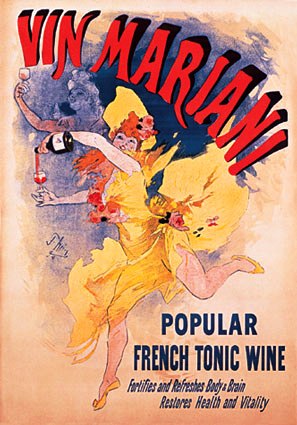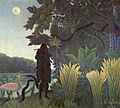Belle Époque facts for kids

La Belle Époque ( French for "The Beautiful Era") was a period of Western history. It lasted from the end of the Franco-Prussian War in 1871 to the outbreak of World War I in 1914.
It was a period of optimism, peace, economic prosperity. The colonial empires were well established. There were many technological, scientific, and cultural innovations. The arts flourished in Paris and elsewhere. Many masterpieces of literature, music, theatre, and visual art were created.
The Belle Époque was named after the event. It was considered a "Golden Age" in contrast to the horrors of World War I. The Belle Epoque was a period in which, according to historian R.R. Palmer, "European civilization achieved its greatest power in global politics, and also exerted its maximum influence upon peoples outside Europe".
In the United Kingdom, the Belle Époque overlapped with the late Victorian era and the Edwardian era in a period known as Pax Britannica. In Germany, the Belle Époque coincided with the reigns of William I, Frederick III and Wilhelm II. In Italy, with the reigns of Victor Emmanuel II, Umberto I and early of the reign of Victor Emmanuel III. In Russia, with the reigns of Alexander III and Nicholas II.
In the United States, after the Panic of 1873, the same period was called the Gilded Age (1870s–1900s). In Brazil, it started with the end of the Paraguayan War. In Mexico, the period was known as the Porfiriato, and in Japan, it coincided with the Meiji period.
Images for kids
-
Grand foyer of the Folies Bergère cabaret
-
Art Nouveau style coffee service in Meissen Porcelain, by Theodor Grust, 1902.
-
A telegraph used to transmit messages in morse code.
-
The sinking of the RMS Titanic in 1912 is the best-known tragedy of the era.
-
The Wright Flyer: the first sustained flight with a powered, controlled aircraft (1903).
-
Auguste Renoir, Bal du moulin de la Galette, 1876, oil on canvas, 131 × 175 cm, Musée d'Orsay
-
Year 2000 video telephony as imagined in France in 1910
-
Map of the Colonial Empires (and their colonies) in the year 1885, when after the Berlin Conference of that year the Partition of Africa between the colonial powers began.
-
Flag-map of the world (1914), just before the start of World War I (1914–1918), which ended the stage of the Belle Époque.
-
Art Nouveau building in Paris by architect Jules Lavirotte, sculptures by Jean-François Larrivé (1875–1928)
-
La charmeuse de Serpents (The Snake-Charmer) (1907) by Henri Rousseau
-
Modern dance (and modern stage lighting) innovator Loie Fuller
-
Jules Massenet and Jean Richepin (the latter as Apollo Citharoedus), authors of Le mage, premiered at the Opéra-Comique in Paris on 16 March 1891
See also
 In Spanish: Belle Époque para niños
In Spanish: Belle Époque para niños

















